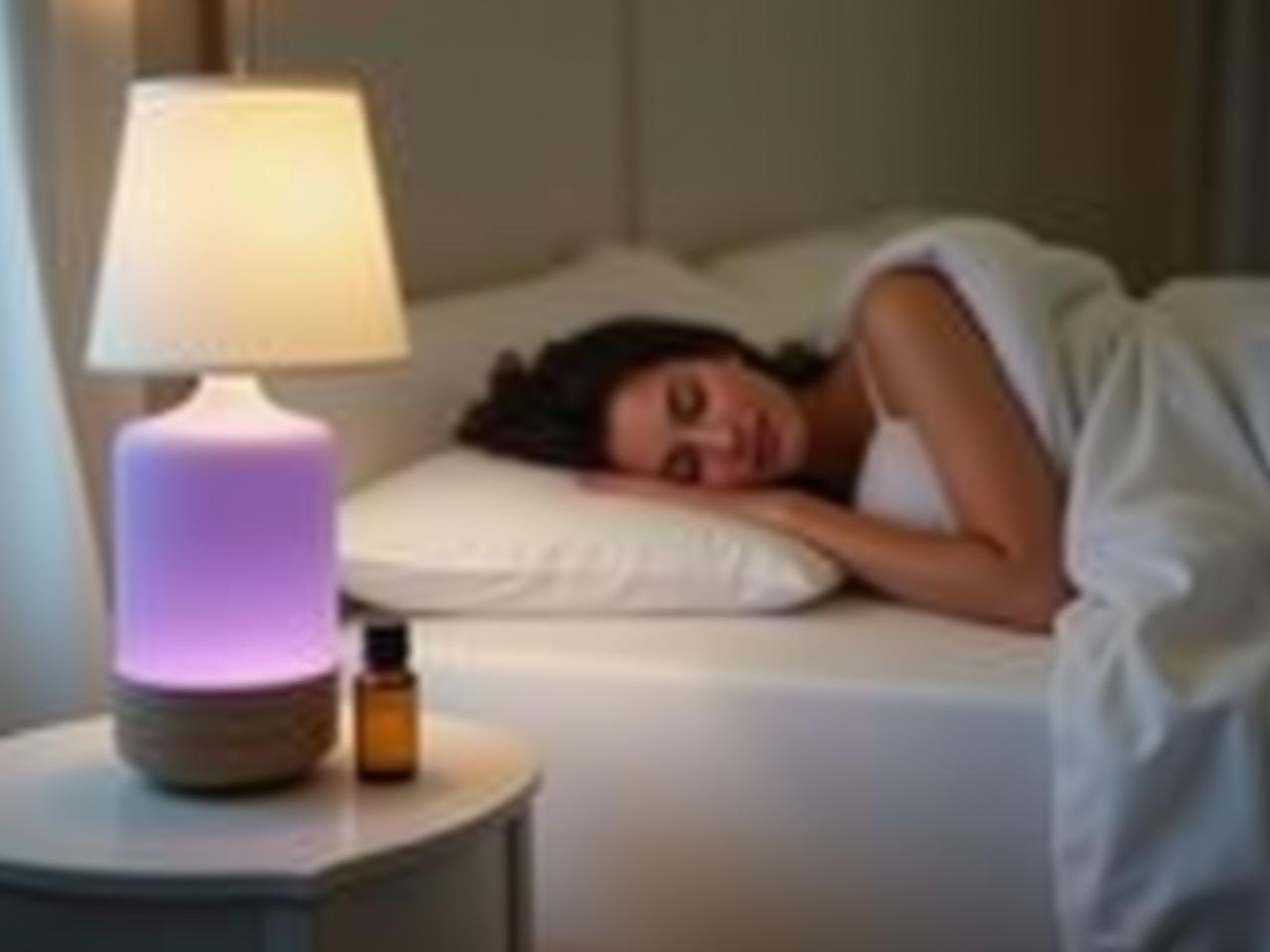Have you ever felt like you're running on empty, despite getting "enough" hours of sleep? You drag yourself through the day, fueled by caffeine and sheer willpower, only to crash on the couch at night, exhausted but unable to truly relax. It's a vicious cycle, and the consequences go far beyond just feeling tired. Our sleep quality profoundly impacts our mood, energy levels, productivity, and even our long-term health. I know this struggle all too well. For years, I battled inconsistent sleep, trying every trick in the book, but nothing seemed to stick. When I stumbled upon "Sleep Smarter" by Sean Stevenson, I discovered a simple but profound truth: it's not just about how much you sleep, but how well you sleep. The key to unlocking your best rest ever lies in optimizing your sleep environment and routine.
The Transformative Insight from "Sleep Smarter"
"Create an environment that screams sleep."
Sean Stevenson brilliantly points out that our modern lifestyles often sabotage our natural sleep rhythms. We bombard ourselves with artificial light, stimulating screens, and constant stress, all of which disrupt our body's ability to produce melatonin, the crucial sleep hormone. The transformative insight from "Sleep Smarter" is simple: treat your bedroom like a sanctuary for sleep.
> "Your bedroom should be a haven, a place you automatically associate with peace, relaxation, and rejuvenation. It shouldn't be your office, your entertainment center, or your storage unit. It's your sleep space, and it should reflect that." - Sean Stevenson, "Sleep Smarter"
Think of your bedroom as a garden. You wouldn't expect plants to thrive in a chaotic, polluted environment. Similarly, your sleep requires a calm, dark, and comfortable space to flourish. This isn't just about aesthetics; it's about signaling to your brain that it's time to unwind and prepare for deep, restorative rest. The goal is to optimize for deep sleep .
Action Plan: 4 Simple Steps for Immediate Implementation
1. Blackout Your Bedroom
Action: Eliminate all sources of light from your bedroom.
Explanation: Light exposure, especially blue light from screens, suppresses melatonin production. Even a tiny amount of light can disrupt your sleep cycle.
Example: Invest in blackout curtains, use electrical tape to cover electronic lights, and consider a sleep mask.
Tip: Test your bedroom at night. If you can see your hand in front of your face, it's not dark enough.
2. Cool Down Your Space
Action: Lower the temperature in your bedroom to between 60-67°F (15-19°C).
Explanation: Our body temperature naturally drops as we prepare for sleep. A cooler environment signals to your brain that it's time to rest.
Example: Adjust your thermostat, use a fan, or open a window (if outdoor noise isn't an issue).
Tip: Take a warm shower or bath before bed. This may seem counterintuitive, but the rapid cooling afterward helps trigger sleepiness.
3. Ditch the Electronics
Action: Remove all electronic devices from your bedroom, or at least keep them at a distance.
Explanation: The blue light emitted from screens interferes with melatonin production, and the constant notifications keep your mind racing.
Example: Charge your phone in another room, use a traditional alarm clock, and avoid watching TV in bed.
Tip: Establish a "digital curfew" at least one hour before bedtime. Use this time for relaxation activities like reading or meditation.
4. Embrace Calming Scents
Action: Introduce relaxing aromas to your bedroom, such as lavender essential oil.
Explanation: Certain scents have been shown to promote relaxation and reduce anxiety, making it easier to fall asleep.
Example: Use a diffuser with lavender, chamomile, or sandalwood essential oil. You can also sprinkle a few drops of lavender oil on your pillow.
Tip: Experiment with different scents to find what works best for you. Be sure to use high-quality essential oils to avoid synthetic fragrances that can be irritating.
How I Applied the Method in My Life
For years, I struggled with falling asleep. I'd toss and turn for hours, my mind racing with thoughts. I knew I needed to create a better sleep environment. I started by investing in blackout curtains and a comfortable eye mask. I also moved my phone charger out of my bedroom and started using a traditional alarm clock. But the biggest game-changer was incorporating lavender essential oil into my bedtime routine. I diffuse it in my bedroom about an hour before bed, and the calming aroma instantly puts me at ease.
At first, I found it difficult to resist the urge to check my phone before bed. But once I started experiencing the benefits of improved sleep, it became much easier to stick to my new routine. Now, I fall asleep much faster and wake up feeling more refreshed.
My biggest tip: Be patient and consistent. It takes time to create new habits, but the rewards are well worth it.
3 Common Mistakes and How to Avoid Them
Mistake 1: Trying to "Catch Up" on Sleep
Instead of: Trying to cram in extra hours of sleep on the weekends to compensate for sleep deprivation during the week, try: maintaining a consistent sleep schedule, even on weekends. Irregular sleep patterns disrupt your body's natural circadian rhythm, making it harder to fall asleep and wake up on time.
Mistake 2: Relying on Sleep Aids
Instead of: Turning to over-the-counter or prescription sleep aids as a quick fix, try: addressing the underlying causes of your sleep problems, such as stress, poor sleep hygiene, or an underlying medical condition. Sleep aids can be helpful in the short term, but they don't address the root cause and can have unwanted side effects.
Mistake 3: Ignoring Daytime Habits
Instead of: Focusing solely on your nighttime routine, try: paying attention to your daytime habits, such as caffeine intake, exercise, and exposure to sunlight. These factors can significantly impact your sleep quality.
The Last Word: Begin Today
Transforming your sleep is not an overnight process, but the rewards are immeasurable. Remember, it's about creating a sleep sanctuary and establishing healthy habits. Even implementing just 10% of the advice from "Sleep Smarter" can lead to significant improvements in your sleep quality, energy levels, and overall well-being.
What small step can you take today to start prioritizing your sleep?
FAQ
Q: I have trouble falling asleep. What can I do?
A: Try a relaxing bedtime routine, such as taking a warm bath, reading a book, or listening to calming music. Avoid screen time for at least an hour before bed.
For example, you can also dim the lights about 2 hours before going to bed in order to help your body produce more melatonin.
Reference: "Sleep Smarter" by Sean Stevenson
Q: How important is a consistent sleep schedule?
A: Extremely important! Going to bed and waking up at the same time each day, even on weekends, helps regulate your body's natural sleep-wake cycle.
Q: Are naps good or bad for sleep?
A: Short naps (20-30 minutes) can be beneficial, but long or frequent naps can disrupt your nighttime sleep.
Q: What about caffeine and alcohol?
A: Avoid caffeine and alcohol close to bedtime. Both substances can interfere with sleep quality.



